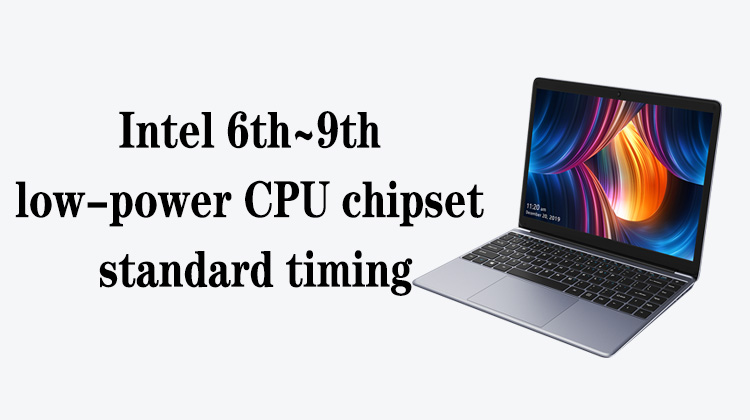1
00:00:00,833 --> 00:00:05,766
In this lesson, we're going to learn about the maintenance of Apple laptop boot without display fault
2
00:00:07,433 --> 00:00:10,766
There are usually 5 phenomena of boot without display fault
3
00:00:11,066 --> 00:00:13,666
First, let's look at the first failure phenomenon
4
00:00:14,800 --> 00:00:18,200
The first failure phenomenon is that after pressing the switch,
5
00:00:18,433 --> 00:00:21,533
it can trigger power-on, but the current does not jump
6
00:00:23,000 --> 00:00:29,233
For example, the current jumps to 0.093A, and then it can no longer go up
7
00:00:30,400 --> 00:00:36,100
At this time, we can measure each power supply on the mainboard to see if any power supply is not generated
8
00:00:38,666 --> 00:00:42,300
As low as this current, it is generally a lack of power supply
9
00:00:43,933 --> 00:00:49,166
We focus on checking the main power supplies controlled by SLP_S3# and SLP_S4#,
10
00:00:49,600 --> 00:00:51,466
as well as the secondary voltage
11
00:00:52,033 --> 00:00:57,700
We can also use the platform reset signal as an entry point to check whether there is a high-level reset signal
12
00:00:58,000 --> 00:01:01,466
According to the Intel standard timing, if there is a reset signal,
13
00:01:01,800 --> 00:01:06,566
it means that the power supply, PG, and clock before the reset are also normal
14
00:01:12,400 --> 00:01:17,000
We can continue to check the signals after reset to see which ones are not generated
15
00:01:20,566 --> 00:01:24,533
Reverse from each condition to see what conditions are still missing
16
00:01:25,033 --> 00:01:35,566
Check the CPU clock, reset, PG, such as PROCPWRGD, VCCST_PWRGD and other signals to see if they are normal
17
00:01:39,133 --> 00:01:42,966
You can also check the power supply of each module of the bridge
18
00:01:43,966 --> 00:01:50,500
If there are no problems with these conditions, we can try to replace the EC,
19
00:01:51,266 --> 00:01:54,133
replace the CPU power supply chip, replace the bridge or replace the CPU for testing
20
00:01:54,266 --> 00:01:56,366
to narrow down the scope of the fault
21
00:02:01,866 --> 00:02:06,866
The second fault phenomenon is that after pressing the switch, the current has a jump action
22
00:02:08,133 --> 00:02:11,566
It means that it may have already entered the self-test state,
23
00:02:11,766 --> 00:02:13,900
and has entered the soft start process
24
00:02:17,600 --> 00:02:21,866
If it is not displayed at this time, we generally rule out the BIOS first
25
00:02:22,566 --> 00:02:27,633
First flash the BIOS, and then use the diagnostic card to see if there is a jump in the code
26
00:02:28,100 --> 00:02:30,366
and if the memory has been tested
27
00:02:31,833 --> 00:02:36,400
If there is no self-test memory, we will check the working conditions of the memory,
28
00:02:37,166 --> 00:02:41,266
and then focus on the problems of PCH, CPU and EC
29
00:02:45,733 --> 00:02:50,933
If the memory has been self-checked, check to see if the graphics card has been initialized,
30
00:02:52,166 --> 00:02:55,533
plug in the screen and see if there is a screen reading action
31
00:02:58,133 --> 00:03:02,500
Like older machines, you can measure the EDID signal of the screen interface
32
00:03:02,566 --> 00:03:04,700
to judge whether there is a screen reading
33
00:03:05,400 --> 00:03:13,166
The new machine uses eDP signal, we can test the EDP_AUX signal to see if there is any screen reading action
34
00:03:13,800 --> 00:03:17,633
Include the sleep lid switch signal LID, to see if it works
35
00:03:19,933 --> 00:03:25,933
Normally it is high level, if it is low level, it will also cause no display when booting
36
00:03:26,433 --> 00:03:30,266
We also need to check whether the backlight circuit of the screen is normal
37
00:03:30,700 --> 00:03:34,200
You can also replace the screen cable, replace the screen,
38
00:03:34,366 --> 00:03:38,800
and measure whether the resistance to ground of the data line of the screen interface is normal,
39
00:03:39,333 --> 00:03:42,133
whether there is an open circuit or a short circuit,
40
00:03:44,033 --> 00:03:46,066
If these problems have been checked,
41
00:03:46,200 --> 00:03:49,366
we also need to consider the reasons for the peripherals
42
00:03:49,600 --> 00:03:53,733
Problems with external devices will also cause no display when booting
43
00:03:54,333 --> 00:04:00,100
For example, the overcurrent of the USB device, the short circuit of the touchpad, etc.,
44
00:04:00,200 --> 00:04:02,166
will cause no display when booting.
45
00:04:04,300 --> 00:04:10,666
The third type of fault is that after the power is turned on, the current jumps once or twice and then stops
46
00:04:11,366 --> 00:04:14,500
This is obviously because the memory self-test fails
47
00:04:16,800 --> 00:04:21,333
If the current jumps continuously after starting up, and the screen is about to light up,
48
00:04:21,866 --> 00:04:27,233
we will focus on checking the working conditions of the graphics card and checking the LID cover switch
49
00:04:27,633 --> 00:04:34,233
For example, the current is up to 0.559A, 0.6A, which is already relatively high
50
00:04:34,733 --> 00:04:38,933
Especially for models like 1466 and 1465,
51
00:04:39,266 --> 00:04:42,200
this current is almost close to turning on the machine
52
00:04:42,800 --> 00:04:44,700
Check the conditions of the memory
53
00:04:45,166 --> 00:04:50,366
Mainly check the main power supply of the memory, VTT power supply and VPP power supply, etc.,
54
00:04:52,433 --> 00:04:57,500
as well as the data line and address line of the memory, we measure it through the value card
55
00:04:59,900 --> 00:05:04,100
We can also test by replacing the memory, or replacing a slot
56
00:05:06,933 --> 00:05:10,900
If the CPU is pluggable, you can replace the CPU test
57
00:05:11,400 --> 00:05:14,666
Like some all-in-one machines, its CPU is pluggable
58
00:05:19,400 --> 00:05:24,033
At the same time, we can also check the working conditions of the CPU memory module
59
00:05:24,566 --> 00:05:28,500
Use an oscilloscope to measure whether there is a waveform that reads the memory
60
00:05:31,100 --> 00:05:34,800
Like the one with memory slots, there is a system management bus,
61
00:05:35,066 --> 00:05:37,600
which can measure the waveform of reading memory
62
00:05:37,833 --> 00:05:41,133
The fifth type of fault, the external connection can display,
63
00:05:41,333 --> 00:05:43,266
but the internal screen does not display
64
00:05:43,700 --> 00:05:47,133
In this case, we focus on checking the LID switch,
65
00:05:47,533 --> 00:05:51,400
and use an oscilloscope to measure whether there is a screen reading action
66
00:05:53,266 --> 00:05:56,466
Check the screen cable, replace the screen test
67
00:05:56,966 --> 00:06:01,400
You can also test whether the data line to ground value of the screen interface is normal,
68
00:06:01,900 --> 00:06:04,333
and check whether the backlight circuit is normal
69
00:06:05,733 --> 00:06:07,966
Next, we learn through two cases
70
00:06:08,666 --> 00:06:11,333
The first case is that the mainboard has been flooded,
71
00:06:12,066 --> 00:06:15,433
causing the bottom pins of the backlight driver chip to corrode
72
00:06:18,133 --> 00:06:22,966
After we disassembled the chip, we replaced the missing pins and the broken signal lines,
73
00:06:28,233 --> 00:06:29,933
and then soldered the chip back
74
00:06:30,900 --> 00:06:33,100
It can display normally after booting
75
00:06:33,833 --> 00:06:38,966
This is because there is a problem with the backlight circuit, which causes no display after booting
76
00:06:43,100 --> 00:06:46,100
The second case is also a problem with the backlight circuit
77
00:06:46,400 --> 00:06:48,966
Waterlogged machines are especially common
78
00:06:49,366 --> 00:06:54,333
There is no display when booting up, and the backlight circuit is really not repairable
79
00:06:55,500 --> 00:07:04,300
We can cut a backlight power supply circuit from another mainboard and migrate it through the way of transplanting,
80
00:07:05,033 --> 00:07:09,533
and use flying wires to make it work and provide working conditions for the backlight
81
00:07:15,633 --> 00:07:17,600
This is the result after repairing
82
00:07:18,366 --> 00:07:21,700
Ok, this is the maintenance of no display fault when starting up







